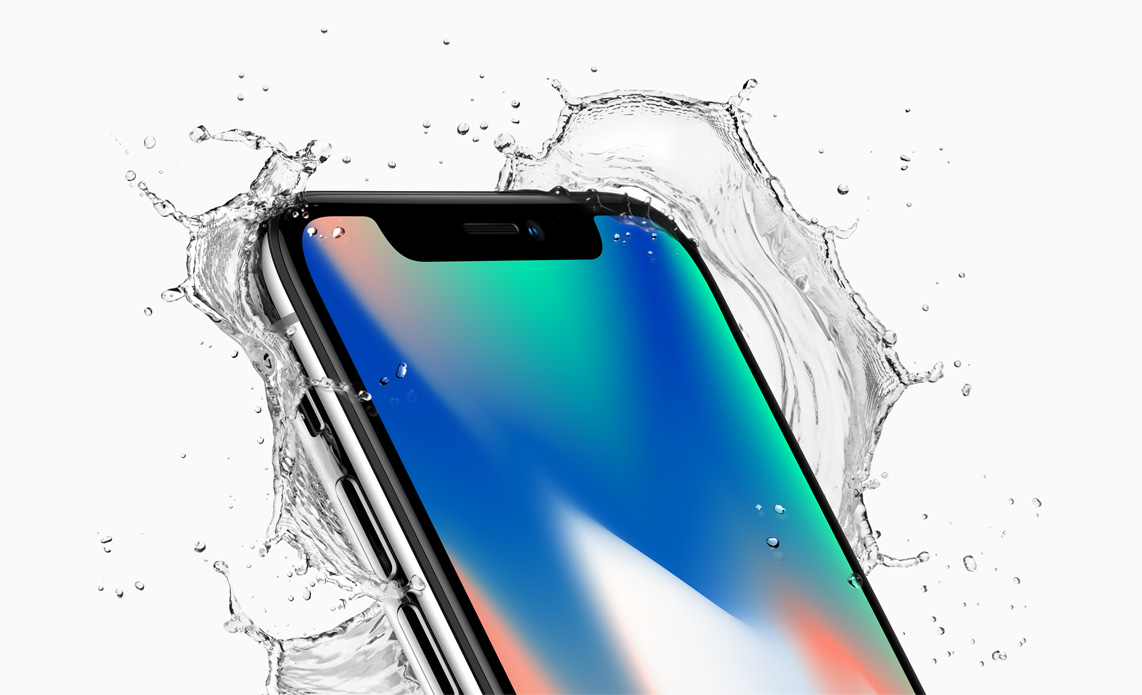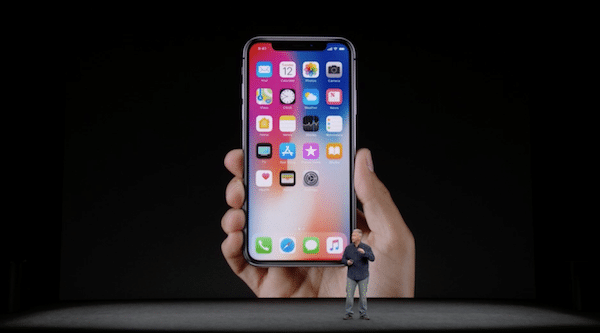
After months of rumors, Apple today unveiled the iPhone X to celebrate the tenth anniversary of the iPhone. Technically, the iPhone 8 and iPhone 8 Plus are the successors to the iPhone 7 and 7 Plus from last year, with the iPhone X being a third new model in Apple’s iPhone lineup this year.
While the iPhone 8 and 8 Plus pack in a number of new features, it is with the iPhone X that Apple has gone all out. The handset packs a number of cutting edge technology that we will only see other smartphones adopt over the next one year.
Design

The iPhone X is made entirely from glass with a stainless steel chassis sandwiched in between. The chassis has cutouts at the top and bottom to ensure that antennagate is not repeated with the handset. The use of glass and steel will help make the iPhone X feel more premium than the iPhone 7 from last year. Similar to the iPhone 8, the glass on the iPhone X has been reinforced further and Apple claims it is the most durable glass ever used on a smartphone.
However, more than the build quality, its the front design of the iPhone X which is going to win people over. Featuring a bezel-less 5.8-inch OLED display, Apple has taken a unique notch display design approach with the iPhone X. While we have seen plenty of smartphones with a bezel-less front, the iPhone X has a notch between the display at the to accommodate various sensors.
Impressively, despite such a huge reduction in bezel space, Apple has managed to continue offering stereo speakers on the iPhone X. Like the iPhone 7, the earpiece on the top of the iPhone X acts as a tweeter and a secondary speaker when the phone is switched to landscape mode with the primary speaker located at the bottom of the device.
Like the iPhone 7 before it, the iPhone X continues to be dust and water-resistant with an IP67 certification.
The iPhone X will be available in Space Gray and Silver colors.
Super Retina HD Display

The iPhone X is all about its 5.8-inch OLED display at the front. Featuring a resolution of 1125 x 2436 and a 458 ppi, the bezel-less design at the front gives the X a very futuristic look. OLED panels are more power efficient, have better contrast ratio and saturation, and are overall just more pleasing to look at when compared to traditional LCD displays.
As if the switch to an OLED panel was not already enough, Apple is also debuting its True Tone display technology on the iPhone X. First seen on the 9.7-inch iPad Pro, the OLED display will automatically change its color saturation and white point depending on the ambient lighting to reduce eye strain and improve readability.
The display supports HDR10 and Dolby Vision and has 1000:1 contrast ratio. It also features 3D Touch as seen on the iPhone 8 and iPhone 7. The display also supports tap to wake which can be used to wake the device up.
A11 Bionic Chip and Storage

The iPhone X features a custom 6-core chip designed by Apple. Unlike the A10 Fusion chip before it, all the six cores on the A11 chip can be individually addressed by apps and the OS. Out of the six cores, four are low-power ‘Mistral’ cores while the other two are high-power ‘Monsoon’ cores. Apple’s A-series chips have always had benchmark busting performance and the A11 chip this year is no different. Based on the 10nm fabrication process, Apple says the chip is 25 percent faster than its A10 chip and up to 70 percent faster in multi-threaded workloads. The chip also makes use of a custom Apple designed GPU which is 30 percent faster than the GPU inside the A10 chip. Impressively, Apple says the GPU is up to 50 percent more power efficient as well.
As for RAM, the iPhone X comes with 3GB of LPDDR4 RAM. It will be available in 64GB and 256GB storage capacities.
Face ID
Touch ID is dead — at least for this year. The iPhone X comes with a brand new type of biometric authentication: Face ID. The handset comes with an array of sensors hidden inside the notch at the front which helps capture depth information about a user’s face for Face ID. Since Apple is also capturing depth information here, the system cannot be easily fooled as seen on many other Android devices.
Apple says the iPhone X is locked until you pick it up and look at it. The TrueDepth camera system uses a bunch of IR sensors and flood illuminator to create a mathematical model of your face. To process face recognition, Apple developed a neural engine for the A11 bionic chip of the iPhone X. The neural engine has a dual-core design and processes all data in real-time.

Apple says that Face ID will not work if you are not looking at your iPhone. Like with Touch ID, all data from Face ID is stored in a secure enclave chip on the A11 Bionic chip.
Apart from using Face ID for unlocking the device, the iPhone X also uses it for authorizing Apple Pay transactions, App Store purchases, and auto-filling in key details in Safari.
No Home Button
Since there is no Home button on the iPhone X, you need to wake the device by simply swiping up from the lock screen. You use the same gesture to exit apps and go back to your home screen. As for Control Center, one can bring it up by swiping down from the status bar on the right.
To switch between apps, one simply needs to swipe at the bottom of the display to move from one app to another.
Camera

The iPhone X features a dual-camera setup similar to the iPhone 7 Plus from last year. However, Apple has reworked the entire camera system which is why it is now placed vertically instead of horizontally. Like the iPhone 8 Plus, the iPhone X features two new 12MP camera sensors along with a new color filter, OIS, and deeper pixels for improved photo quality. The primary lens continues to feature f/1.8 aperture while the telephoto lens features an f/2.4 aperture and offers 2x optical zoom. Interestingly, the telephoto lens on the iPhone X also features OIS which should help improve stabilization and low-light photos. The camera setup is paired with a Quad-LED True Tone flash.
Thanks to the beefier A11 chip and upgraded camera hardware, the iPhone X, like the iPhone 8 and iPhone 8 Plus, can record videos in 4K resolution at 60fps — the first smartphone in the world to do so. It can also record videos in Full HD resolution at 240fps.
The powerful ISP also allows Apple to offer Portrait Lighting feature on the iPhone X. An upgrade over the existing Portrait mode found on the iPhone 7 Plus, the Portrait Lighting feature allows one to tweak the background lighting effect on Portrait photos. The available effects include Studio Light, Stage Light, Contour Light, Natural Light, and Light Mono. The lighting effect can be changed before and after taking a photo as well.
The front FaceTime HD camera still has a 7MP resolution but thanks to the TrueDepth camera system, the iPhone X is capable of taking Portrait selfies and offer Portrait Lighting mode as well.
Animoji

Using the front camera and other sensors on the iPhone X which are used by Face ID, Apple will also be allowing users to create custom emoji based on their facial recognition. The company is calling this feature Animoji. Custom Animoji can be shared with friends and families over iMessage.
Battery
The iPhone X can last for two additional hours when compared to the iPhone 7.
Connectivity
The iPhone X features NFC, Bluetooth 5.0, Apple’s W1 chip, LTE-A, fast charging, Lighting port, and Qi wireless charging. Apple also announced AirPower, its own charging mat that can be used to simultaneously charge the iPhone X (or iPhone 8), Apple Watch Series 3, and even your AirPods with its optional new wireless charging case.
AirPower goes on sale in 2018 at an unannounced price.
Like the iPhone 8 and iPhone 8 Plus, the iPhone X can also be charged with other Qi-compatible wireless chargers out there.
Availability
The iPhone X will be available from November 3 for $999, with pre-orders starting from October 27. The handset will be available in 64GB and 256GB storage variants.